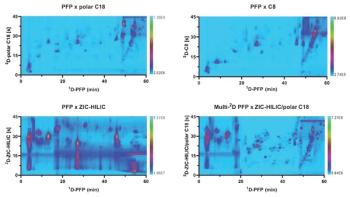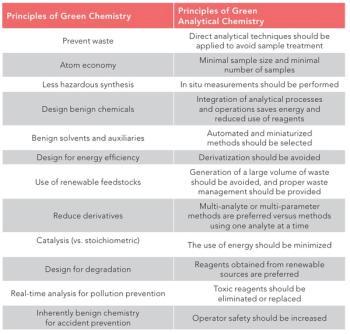Key Points:
- Dwight Stoll discussed how pore size greatly influences plate height, which in turn affects resolution in both isocratic and gradient modes.
- The melting temperature (Tm) is critical for nucleic acid separations and influences whether nucleic acids exist as duplexes or single strands during LC, affecting their retention and separation,particularly relevant for siRNA, gRNA, and mRNA analyses, as demonstrated by Martin Gilar.
- Szabolcs Fekete highlighted how combining weak-to-strong ion-pairing agents in a gradient, as well as using concave gradients with short columns, enables faster, more selective reversed-phase separations for complex oligo mixtures.
- Torgny Fornstedt highlighted ion-pair reversed-phase liquid chromatography (IP-RPLC) as the preferred technique for both analytical and preparative oligonucleotide separations.
A closing session on Day 1 of HPLC on Monday, June 15, 2025, ended with a topic that is on everyone’s lips in separation science: oligonucleotide analysis. The session was chaired by two luminaries in this area of research, Davy Guillarme from the University of Geneva, Switzerland, and Kelly Zhang from Genentech, USA.
Dwight Stoll from Gustavus Adolphus College, Minnesota, USA, started the session with a talk entitled: Recent Developments in One- and Two-Dimensional Liquid Chromatography for Oligonucleotide Analysis: A Mix of Traditional Techniques and New Discoveries.
Stoll highlighted that oligonucleotides (ONs) are increasingly important in the biopharmaceutical field, with therapeutic uses that include gene regulation and RNA-based vaccines. As these molecules become more structurally complex, the demand for reliable analytical techniques to evaluate their purity, identity, and stability has grown. Liquid chromatography (LC) has proven to be a critical method for ON analysis, offering high-resolution separations capable of distinguishing between closely related variants, truncated sequences, and chemically modified forms.
Stoll described research aimed at enhancing LC methods for ON separation. One focus was the impact of column length on the separation of similar ON structures. Current findings indicate that standard columns (5–15 cm) perform well, and that extending column length can significantly improve resolution when elution parameters are carefully optimized.
Another area of study involved the effect of particle pore size on chromatographic performance. Through experiments using various particle and pore sizes, Stoll demonstrated that pore size greatly influences plate height, which in turn affects resolution in both isocratic and gradient modes. These findings support a comprehensive approach to optimizing one-dimensional and two-dimensional LC techniques for the effective separation of ONs, concluded Stoll.
Significance of Nucleic Acid Melting Temperature in Liquid Chromatography Analysis was presented by Martin Gilar from Waters Corporation, USA.
The ability of nucleic acids to form duplex structures plays a central role in their analysis, purification, and enzymatic modification, according to Gilar. For example, small interfering RNA (siRNA) can be analyzed either as a duplex under non-denaturing conditions or as individual strands under denaturing LC. Guide RNA (gRNA) can adopt secondary structures necessary for CRISPR-Cas9 binding, which may influence its chromatographic behavior. In mRNA purification, hybridization between the poly(A) tail and an immobilized oligo-dT is commonly employed, while complementary strand binding can protect RNA from single-strand-specific nucleases, according to Gilar.
The effectiveness of these approaches depends on the stability of the nucleic acid duplex, which is defined by the melting temperature (Tm). In his presentation, Gilar explained how Tm is influenced by variables such as buffer concentration, ion type, organic solvent content, and the choice of stationary phase in LC. Using chemically modified siRNA as a model system, Gilar demonstrated how these factors affect duplex stability and, consequently, the outcome of chromatographic separations.
Szabolcs Fekete from Waters Corporation in Geneva, Switzerland, presented a talk entitled Enhancing Oligonucleotide RPLC Selectivity with Weak-to-Strong Ion Pairing Gradients.
Fekete presented a new approach to improve ion-pair reversed-phase (IP-RP) separations of oligonucleotides by using a dual ion-pairing gradient. While most methods rely on a fixed concentration of a single ion-pairing agent with an organic solvent gradient, Fekete proposed combining a weak, hydrophilic ion-pairing reagent in the initial aqueous phase with a strong, hydrophobic one in the later organic-rich phase. This method significantly improves resolution and selectivity, particularly for complex mixtures containing both size and sequence variants, according to Fekete. The technique, enhanced with concave gradients and short columns (20 x 2.1 mm), enables faster, high-resolution separations, supporting efficient analysis in oligonucleotide drug development. Fekete also described the benefits of dual and ternary gradient strategies for method development in oligo analysis.
Challenges in the Analytical and Preparative Separation of Therapeutic Oligonucleotides was presented by Torgny Fornstedt from Karlstad University, Sweden.
Fornstedt addressed the analytical challenges of separating complex therapeutic oligonucleotides, which often feature extensive chemical modifications and generate hundreds of impurities and diastereomers—especially in phosphorothioate-modified sequences. For a fully modified 20-mer, this can exceed half a million stereoisomers. Fornstedt emphasized ion-pair reversed-phase liquid chromatography (IP-RPLC) as the most effective method for both analytical and preparative separations. He highlighted the importance of selecting appropriate stationary phases, mobile phases, and gradient conditions. The presentation also introduced a digital, automated approach to resolve overlapping chromatographic peaks, allowing more accurate quantification from complex samples. Comparisons were made between antisense oligonucleotides (ASOs) and siRNA separation strategies.





